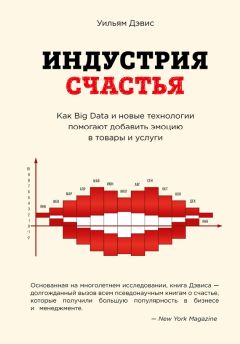Николай Ссорин-Чайков - Топография счастья
120
Об авторе: социолог, социальный антрополог. Место работы: Научно-исследовательский университет Высшая школа экономики, факультет социологии, кафедра общей социологии. Темы исследований: автомобильность, социальный капитал, фольклорное движение, дауншифтинг.
E-mail: [email protected]; [email protected]
121
Речь идет о передаче «Люди и деньги» на радиостанции «Эхо Москвы».
122
Steams P. N. Defining Happy Childhoods: Assessing a Recent Change // The Journal of the History of Childhood and Youth. Vol. 3. № 2. Spring 2010. P. 165.
123
Richman A. L., Miller P. M., Solomon M. J. The Socialization of Infants in Suburban Boston// R.A LeVine, P. M. Moiller, H. M. West (Eds.). Parental Behavior in Diverse Societies. San Francisco. 1988. P. 65–74. См. также: Strauss С. The Culture Concept and the Individualism-Collectivism Debate: Dominant and Alternative Attributions for Class in the United States // Culture, Thought and Development / L. P. Nucci, G. B. Saze, E. Turiel (Eds.). Mahwah, 2000. P. 85–114.
124
См., напр., Rogoff В. The Cultural Nature of Human Development. N.Y., 2003; прекрасный обзор разных подходов к изучению детства предложен в кн.: Воососк. S.S., Scott К. А. Kids in Context: The Sociological Study of Children and Childhoods. Lanham, 2005. P. 6–48.
125
См., напр.: Радаев В. В. Еще раз о предмете экономической социологии // Социологические исследования. 2002. № 7.
126
Зелизер В. Социокультурное значение денег. М., 2004.
127
Zelizer V. Pricing the Priceless Child: Changing Social Value of Children. Princeton. 1985.
128
Idem. The Price and Value of Children // Economic lives: How Culture Shapes the Economy. Princeton, 2011. P. 44–47.
129
Gordon L. The Perils of Innocence, or What’s Wrong with Putting Children First. The Journal of the History of Childhood and Youth. Vol. 1. № 3. Fall 2008. P. 331.
130
В частности: Зарубина H. H. Деньги в социальной коммуникации // Социологические исследования. 2006. № 6. С. 3–12.
131
Абрамова С. Б. Деньги как социальная ценность: поколенческий срез проблемы // Социологические исследования. 2000. № 7. С. 37–41.
132
Тюхтенева С. П. Даем много денег // Этнографическое обозрение. 2009. № 2 (Специальная тема номера «Антропология денег». Отв. ред. С. Тюхтенева).
133
Зарубина Н. Н. Деньги как социокультурный феномен: пределы функциональности // Социологические исследования. 2005. № 7. С. 13–21.
134
Махлина С. Т. Семиотика культуры повседневности. СПб., 2009. С. 188.
135
www.anthro.uci.edu/html/Programs/Anthro/Money.
136
См.: Hart К. Notes towards an Anthropology of Money // Kritikos. Vol. 2. 2005. June 20.
137
Oliveri R. G. Looking at money in America // Critique of Anthropology. Vol. 18. № 1. P. 35–39.
138
Russell W., Waldendoif B. M. The Sacred Meanings of Money // Journal of Economic Psychology. Vol. 11. March 1990. P. 35–67.
139
Weatherford J. The History of Money. NY, 1997.
140
Zeliier V. Kids and Commerce. Childhood in American Society / Ed. by K. Stemheimer. Boston, 2011. P. 377.
141
Lino M. Expenditures on Children by Families: 2001 Annual Report. US Department of Agriculture, Center for National Policy and Promotion. Misc. Publication. № 1528–2001.
142
The Wall Street Journal. 2010. June 19.
143
Подробнее о стоимости и цене материнства см.: Crittenden A. The Price of Motherhood. NY, 2001; Avellar S., Smock P. J. Has the price of motherhood declined over time? A cross-cohort comparison of the motherhood wage penalty // Journal of Marriage and Family. Vol. 65. 2003. P. 597–607.
144
Shellenberger S. Managing the Expectations of Costly Kids // The Wall Street Journal. 2010. Sept. 14.
145
Longman Ph. J. The Cost of Children. US News ad World Report. 1998. March 30. P. 31.
146
Подробнее см.: Zelizer V. From Baby Farms to Baby M. // Economic Lives: How Culture Shapes the Economy. Princeton, NJ., 2011. P. 61–72.
147
Подробнее о конфликтующих ролях для родителей см.: Hewlett S. A., West С. The War Against Parents // Childhood lost: How American Culture is Failing our kids / Ed. by O. Sh. Westport. CT. 2005. P. 66.
148
Gordon L. Op. cit. P. 331.
149
More than 1 in 5 kids live in poverty // Loz Szabo. USA Today. 2010. June 4.
150
«Solve this». NPR Radio. 2012 Oct. 15.
151
См. также: Осколкова О. Б. Бедные дети богатой Америки // Социологические исследования. 2003. № 2. С. 78–86.
152
Roverson D. A Beautiful Bundle of Bills // Baystate Parent. March 2009. P. 32.
153
Qvortrup J. A Voice for Children in Statistical and Social Accounting // Constructing and Reconstructing Childhood / A. James, A Prout (eds.). L., 1990.
154
Nomaguch K. M.i, Milkie M. A. Costs and Rewards of Children: The Effect of Becoming a Parent on Adults Lives // Journal of Marriage and Family. 2003. № 65. P. 356–374.
155
Caplan В. The Breeder’s Cup // WSJ. 2010. June 19.
156
См., напр.: Children Bound to Labour // The Pauper-Apprentice System in Early America / R. W. Herndon, Murray J. E. (eds.). Ithaca, NY, 2009.
157
Zelizer V. From Child Labor to Child Work: Redefining the Economic World of Children // Children in American society: a reader / Ed. by K. Sterheimer. Boston, 2011. P. 5–18.
158
Lee Y.-S., Schneider S., White L. Children and Housework: some Unanswered Questions // Sociological Studies of Children and Youth 2003. № 9. P. 105–125.
159
Valenzuela A. Gender Roles and Settlement A;tivities Among Children and Their Immigrant Families // Childhood in American Society… P. 228–231.
160
Athavaley A. How Tough Times Yield Model Children // The Wall Street Journal. 2009. Nov 3.
161
Wattu С. Baby Showers // Baystate Parent. March 2009. P. 29.
162
Etiquette Check%. We Had the Baby, Please Send Cash // The Wall Street Journal. 2009. May 27.
163
Earle A. M. Child Life in Colonial Days. 1899. Reprinted Berkshire House Publishers. MA 1993. P. 397.
164
The Mother’s Book by Mrs. L. Marie Child. Boston, 1831. Reprinted. P. 12.
165
«The March of Dimes» изначально предложил президент Ф. Д. Рузвельт для сбора средств на борьбу с полиомиелитом; со временем он превратился в благотворительный проект, направленный на различные проблемы, связанные с дефектами при рождении и проч. «Quarters» шли на борьбу с лейкемией.
166
Clark C. D. Flight Toward Maturity: the Tooth Fairy // Childhood in American Society: A Reader / Ed by K. Stemheimer. Boston, 2011. P. 355–364.
167
Они очень любимы и российскими авторами, см. переводы К. Чуковского, С. Маршака, В. Левина и др.
168
Best Loved Nursery Rhymes and Songs Parents Magazine. 1973.
169
Brown M. Arthur’s Pet Business. 1990.
170
Polacco P. Uncle Vbva’s Tree — Silver Dollar. 1989.
171
Polacco P. Chicken Sunday. 1992.
172
Hoban R. A Bargain for Frances. 1970.
173
Brandenberg F. Leo and Emily’s Zoo. 1988.
174
Hall D. Ох-cart Man. 1979.
175
Viorsi J. Alexander Who Used to be Rich Last Sunday. Atheneum, 1987.
176
Berenstein S. and J. The Berenstain Bears Get the Gimmes. 1988; The Berenstein Bears’ Trouble with Money. 1983; The Berenstain Bears and Mama’s New Job. 1984.
177
www.myprettypenny.com.
178
Lieber R. Too Young to Finance. Think Again. The New York Times. 2011. Aug 15. Правда, авторы давно существующей специальной программы для дошкольников (www.themoneymammals.com) были недовольны.
179
Kissell С. Teaching kids about cash: whose job is it. 2012. Oct. 3; www.foxbusiness.com/personal-finance.
180
www.msgen.com.
181
Scott K. A. In girls, out girls, and always Black: African-American Girls Friendships // Sociological Studies of Children and Youth. Vol. 9. P. 397–414.
182
Nasaw D. Children of the City. NY, 1985.
183
New York Times. 2001. Jan. 20.
184
www.usmint.gov/kids/coins.
185
Strauss E. Grades 1–2. Reading Activities. 1998. P. 37.
186
Iggulden C. and I. Iggulden. The Dangerous Book for Boys. N.Y., 2007. P. 191–193.
187
Susan Beacham, www.msgen.com.
188
www.threejars.com, www.moonjar.com.
189
McNeal J.U. The Kids Market. Ithaca, NY, 1999. P. 69, 71.
190
www.moneycnn.com.
191




